Welcome, succulent lovers! Are you ready to dive into the wonderful world of Senecio herreianus? This guide is your key to unlocking the secrets of caring for this enchanting succulent plant. Whether you’re a seasoned collector or just starting out, I’m here to provide you with all the essential tips to ensure your Senecio herreianus thrives in your care.
But here’s a question to pique your curiosity: Did you know that Senecio herreianus has a hidden talent that sets it apart from other succulents? Curious to find out? Let’s explore the fascinating characteristics and care requirements of the Senecio herreianus, also known as the “string of dolphins” plant. Get ready to be amazed!
Appearance of Senecio Herreianus
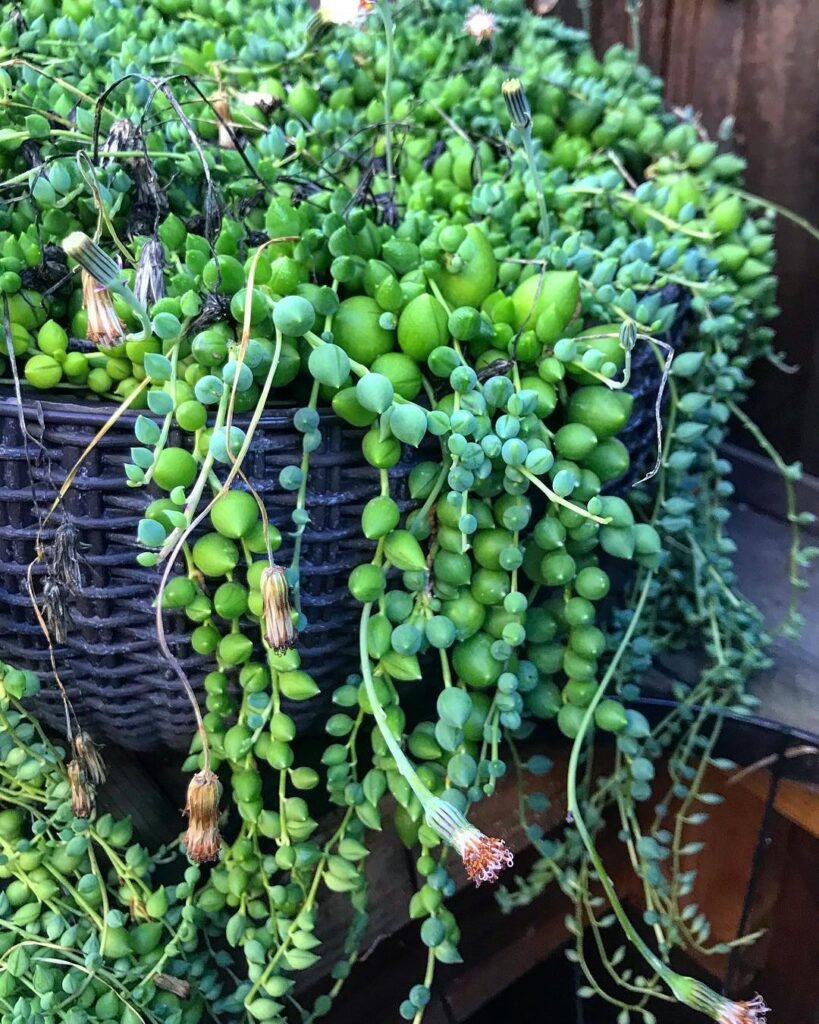
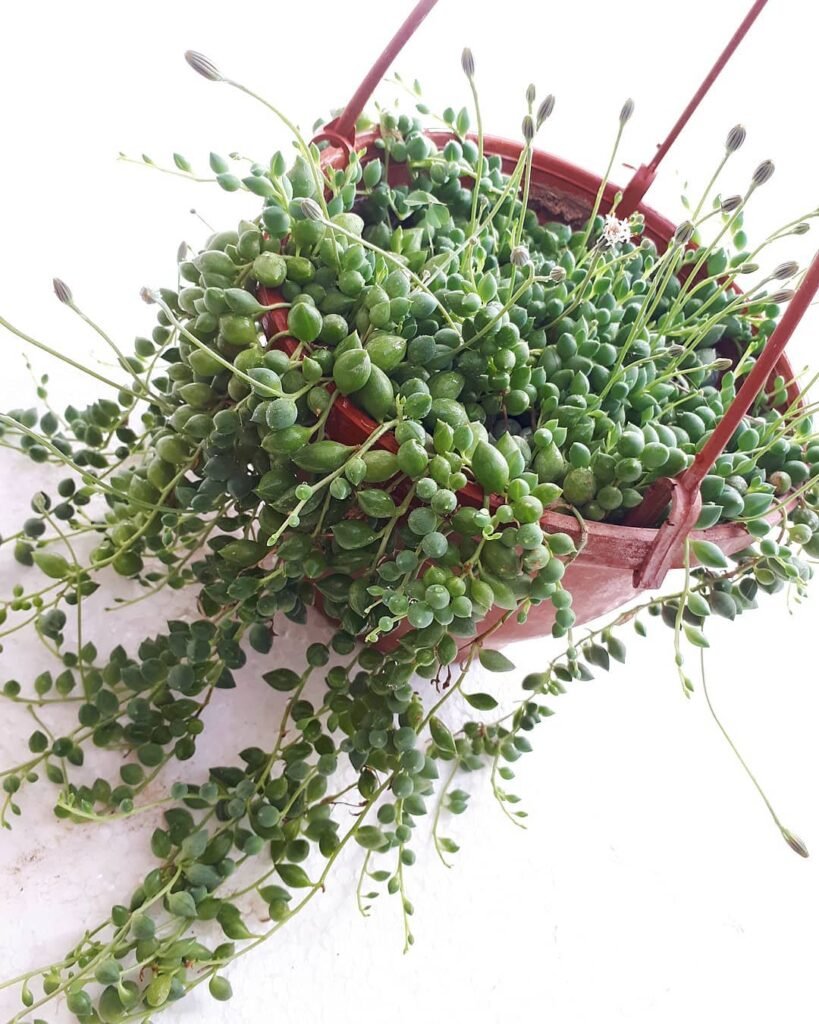
Senecio herreianus is a unique succulent with trailing, vine-like stems that make it a standout in any garden. One of its most interesting features is the shape of its leaves, which resemble tiny dolphins. Because of this characteristic, it is often called the “string of dolphins” plant. The leaves are not only unique in shape but also have a beautiful purple flush, adding an extra touch of beauty to this already captivating succulent.
When it comes to comparing Senecio herreianus with other senecio varieties, it is often compared to the trailing jade or string of raindrops. While these plants all share similar trailing growth habits, the string of dolphins stands out with its distinctive leaf shape and purple flushed foliage. This striking appearance makes Senecio herreianus a popular choice among succulent enthusiasts who appreciate the variety and beauty it adds to their collection.
 When Senecio Herreianus blooms, it produces small, white flowers with a faint, pleasant scent, sometimes described as cinnamon-like.
When Senecio Herreianus blooms, it produces small, white flowers with a faint, pleasant scent, sometimes described as cinnamon-like.
Light Requirements for Senecio Herreianus

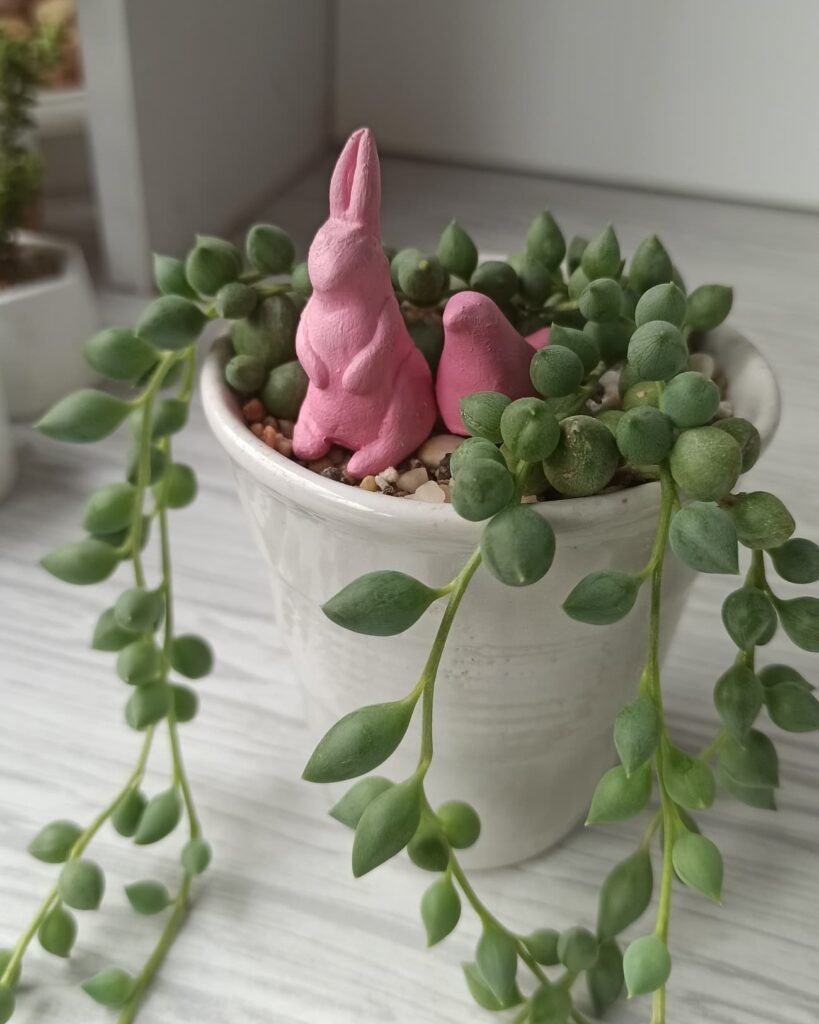
When it comes to giving your Senecio herreianus the optimal light conditions, it’s important to strike the right balance. This trailing succulent thrives in bright, indirect light. Position your plant in a location where it can bask in at least six hours of sunlight each day.
However, it’s essential to avoid exposing your Senecio herreianus to direct sunlight, as this can potentially scorch its delicate leaves. Keep a watchful eye on your plant’s foliage. If you notice a reddish tinge, it might be an indication that it’s receiving too much light.
If your Senecio herreianus is showing signs of leaf burn, it’s advisable to relocate it to a slightly shadier spot. By finding the perfect balance of light, you can help your beloved Senecio herreianus thrive and prevent any potential damage to its beautiful trailing stems and leaves.

Watering Tips for Senecio Herreianus
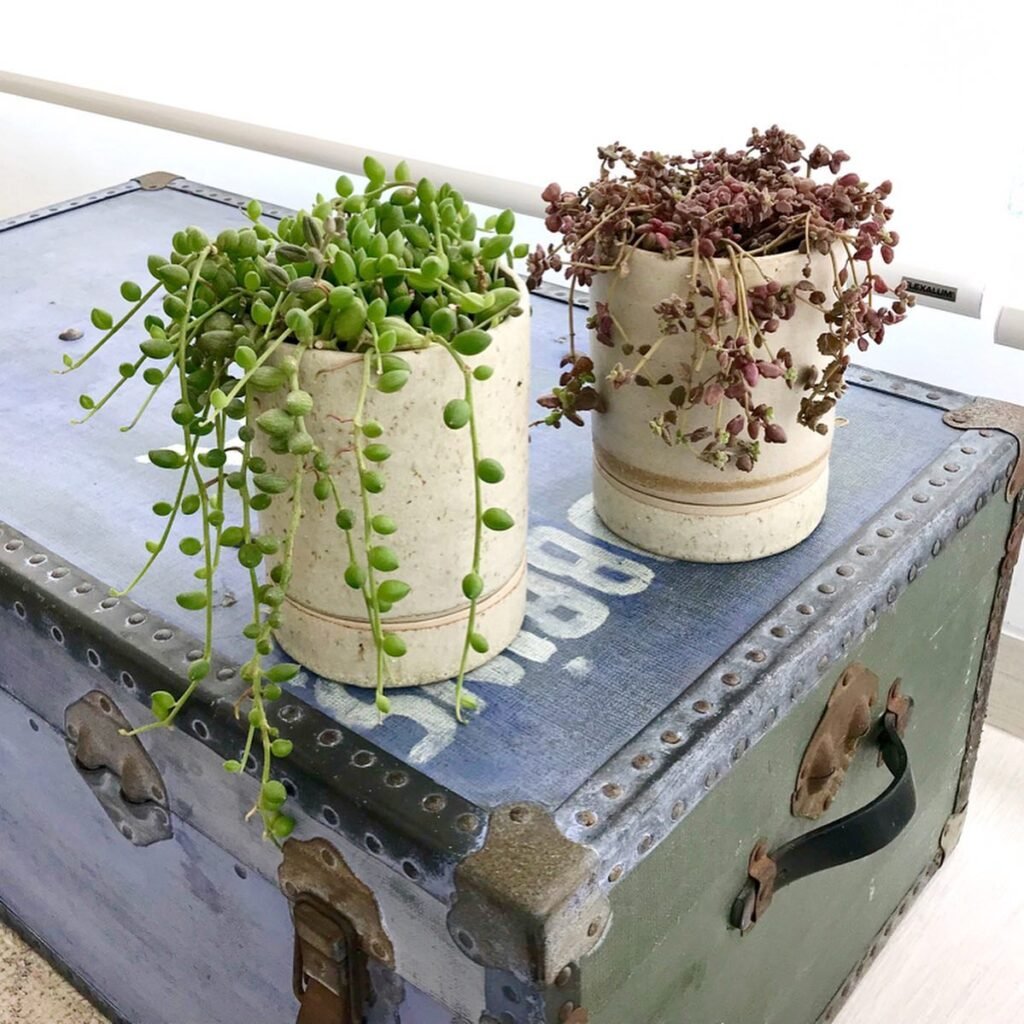

When caring for your Senecio herreianus, striking the right balance when it comes to watering is crucial. This beautiful succulent thrives in well-draining soil, so overwatering should be avoided to prevent root rot. To determine when to water, simply check the top inch of the soil. If it feels dry to the touch, it’s time to water.
When watering your Senecio herreianus, make sure to give it a thorough soak. This allows the water to penetrate the soil and reach the roots. After watering, allow the excess water to drain out completely. Remember, this succulent does not like to sit in soggy soil.
During the winter months, reduce the frequency of watering as the plant enters a period of dormancy. The growth slows down, and the plant requires less water. Only water when the soil is completely dry to avoid overwatering. This will help mimic the plant’s natural habitat and ensure its overall health.

Fertilizing and Soil for Senecio Herreianus
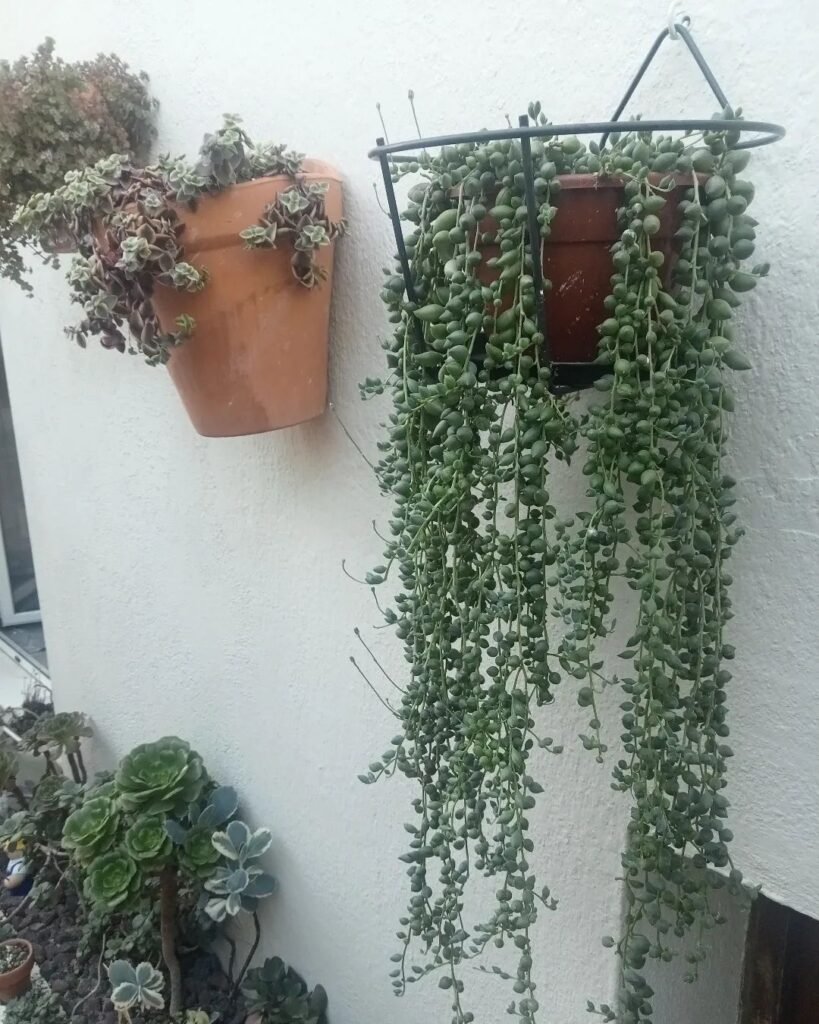

Senecio herreianus, commonly known as the senecio herreianus succulent, is a low-maintenance plant that doesn’t require frequent fertilization. During the active growing season, I recommend using a diluted succulent or cactus fertilizer once every two to three months to provide the necessary nutrients for optimal growth.
When it comes to the soil, it is crucial to ensure that it is well-draining to prevent root rot. A suitable soil mixture for senecio herreianus includes a combination of cactus soil, perlite, or pumice. This blend allows for proper water drainage, keeping the roots healthy and free from excess moisture.
By providing the right fertilization and soil conditions, you can ensure that your senecio herreianus succulent thrives and continues to beautify your indoor or outdoor space.

Pruning and Maintenance of Senecio Herreianus
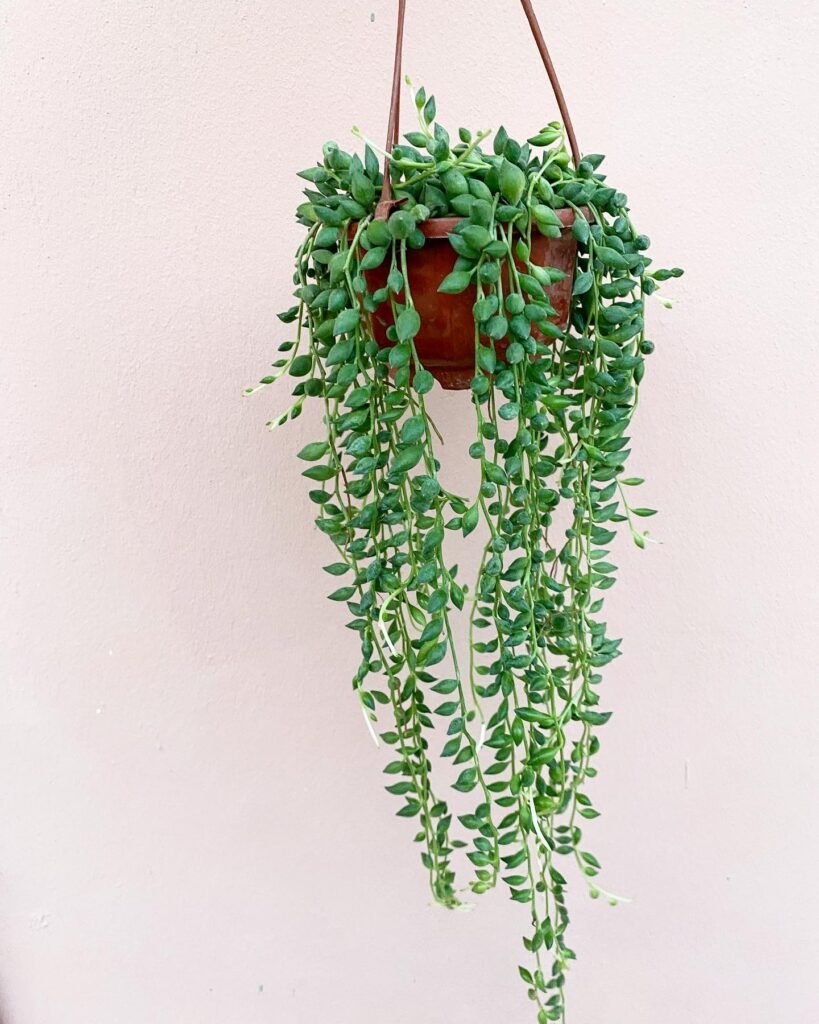

Regular pruning is not necessary for Senecio herreianus. However, if the stems become leggy or overly long, you can trim them to maintain a compact and bushy appearance. This ensures that your Senecio herreianus remains visually appealing and healthy. Additionally, by propagating the cuttings, you can create new plants to expand your collection.
When handling Senecio herreianus, it is crucial to exercise caution. This plant contains sap that can be toxic and cause skin irritation. It is advisable to wear gloves or use protective measures while working with the plant. Take care to avoid any direct contact with the sap to mitigate the risk of irritation.
Keeping Pests at Bay
To keep your Senecio herreianus thriving, it is essential to watch out for pests such as mealybugs. Regularly inspect the plant for signs of infestation, including visible pests or white, cotton-like webbing on the foliage. If detected, treat the affected areas promptly to prevent further damage. There are various methods to address mealybug infestations, including using organic sprays or wiping the pests off the plant with a cotton swab soaked in rubbing alcohol.

Propagating Senecio Herreianus


Propagating Senecio herreianus is a rewarding process that allows you to expand your collection of these beautiful succulent plants. There are a few simple steps to follow to successfully propagate this species.
Gathering Stem Cuttings
To begin propagating Senecio herreianus, select a healthy stem from the plant. Use clean and sharp gardening shears to make a clean cut, ensuring that the cutting is around 4-6 inches long. It is important for the stem to be healthy and free from any damage or disease.
Allowing the Stems to Callous
After removing the stem cutting, place it in a dry and shaded location for a few days to allow the cut end to callous. This step is essential to prevent the cutting from rotting when it is planted.
Preparing Well-Draining Soil
While the stem cutting is callousing, prepare a well-draining soil mixture for planting. A blend of succulent or cactus soil mixed with perlite or pumice works well for Senecio herreianus. This type of soil allows for proper drainage and prevents the roots from becoming waterlogged.
Planting the Cuttings
Once the stem cutting has calloused and the soil is ready, it’s time to plant the cuttings. Make a small hole in the soil using your finger or a pencil, and gently insert the cut end of the stem into the hole. Press the soil around the cutting to provide stability.
Providing Light and Moisture
Place the newly planted cuttings in a location that receives bright, indirect light. Avoid exposing them to direct sunlight as it may be too intense for the delicate plants. It is important to mist the cuttings lightly to provide moisture without soaking the soil. This will help the roots establish themselves.
Root Development and Growth
Keep the soil slightly moist during the rooting process, but be careful not to overwater. Over time, you will notice small roots starting to form at the base of the stem cutting. This is a sign that the propagation process is successful. As the roots develop, the new plant will grow, and you can gradually reduce the frequency of misting.
With patience and proper care, your propagated Senecio herreianus cuttings will mature into beautiful plants. Remember to monitor the soil moisture, provide adequate light, and avoid overwatering to ensure the success of your propagating efforts.

Repotting Tips for Senecio Herreianus
When caring for your Senecio herreianus, it’s important to know when and how to repot the plant. Senecio herreianus prefers slightly crowded conditions, so repotting should be done sparingly.
Repotting is necessary when the roots have outgrown the current pot or when the soil needs replacement due to poor drainage. Choose a pot that is only slightly larger than the current one, as this will prevent the soil from staying too moist for too long.
When repotting, ensure you use fresh, well-draining soil to provide the optimal growing conditions for your Senecio herreianus. A mixture of cactus soil and perlite or pumice works well. This combination allows for proper drainage and prevents the risk of root rot.
It’s essential to handle Senecio herreianus with care during the repotting process. The sap of this plant can irritate the skin, so it is recommended to wear gloves when handling it. Additionally, keep in mind that Senecio herreianus is toxic if ingested by pets or children, so always take appropriate precautions.
 Senecio Herreianus, also known as String of Beads, has bead-like leaves that store water. This lets it thrive in dry conditions by minimising water loss, a brilliant adaptation for arid climates!
Senecio Herreianus, also known as String of Beads, has bead-like leaves that store water. This lets it thrive in dry conditions by minimising water loss, a brilliant adaptation for arid climates!
The Difference Between Senecio Herreianus and Senecio Rowleyanus
While caring for your Senecio herreianus, you may come across another succulent called Senecio rowleyanus, commonly known as string of pearls. Although similar in appearance, these two plants have distinct differences. While Senecio herreianus has leaves shaped like tiny dolphins, Senecio rowleyanus has rounded, bead-like foliage. The string of pearls plant features small spherical leaves that resemble a pearl necklace, giving it its popular name. Both plants share the same care requirements, such as well-draining soil and bright, indirect light, making them excellent choices for any succulent lover.
Now that you are familiar with the pruning and maintenance of Senecio herreianus, you can confidently care for this unique succulent. By following these guidelines, you can maintain the plant’s compactness, keep pests at bay, and recognize the distinctions between Senecio herreianus and Senecio rowleyanus. With proper pruning and care, your Senecio herreianus will continue to thrive and delight with its beautiful foliage for years to come.
FAQ about Caring for Senecio Herreianus

Curious about how to look after your Senecio Herreianus, or String of Beads? You’re in the right place! I’ve put together all the key info to help you care for your plant easily. From getting the watering just right to sorting out common issues, I’ve got you covered.
Senecio Herreianus, commonly known as String of Beads or String of Pearls, is a succulent plant famous for its bead-like leaves.
It thrives in bright, indirect sunlight. Direct sunlight can scorch its leaves, so a bit of shade is beneficial.
This plant prefers temperatures between 10°C and 24°C. Keep it away from draughty areas in winter.
Water it sparingly—only when the soil is completely dry. Over-watering can lead to root rot.
Use a well-draining cactus or succulent mix to ensure proper drainage.
It can be grown outdoors in summer, but it’s best to bring it inside once temperatures begin to drop below 10°C.
Easily propagate by taking cuttings of the beads and placing them in soil, ensuring they get indirect sunlight until rooted.
Yes, it can produce small, white or pale pink flowers that have a sweet cinnamon-like scent when it matures.
If your plant becomes leggy, consider moving it to a brighter spot and prune back the tendrils to promote bushier growth.
Watch out for mealybugs and spider mites. Treat infestations early with insecticidal soap.
Yes, it is toxic to pets and humans if ingested, so keep it out of reach.
Absolutely, its trailing growth makes it perfect for hanging baskets or high shelves.
Repot every two years or when you see roots coming out of the drainage holes. Be gentle as its roots are delicate.
This usually indicates under-watering. Check the moisture of the soil and adjust your watering schedule accordingly.
Feed with a diluted succulent fertiliser during the growing season (spring and summer) for best results.
Dropping beads can be a sign of over-watering, too little light, or drastic temperature changes.
Any container with good drainage will work. Terracotta pots are ideal as they allow the soil to dry out more evenly.
I hope you’ve found these tips helpful for taking care of your Senecio Herreianus, or String of Beads. Remember, a little care goes a long way in keeping your plant thriving. If you have any other questions or need more advice, feel free to explore the resources or reach out. Happy gardening!
Conclusion
Taking care of your Senecio herreianus is a rewarding and enjoyable experience. By following the proper guidelines, you can ensure the optimal growth and health of your string of dolphins plant. Remember to provide it with the right amount of light, water, and occasional fertilization to support its needs.
Handle your Senecio herreianus with caution due to the toxic sap it contains. Ensuring it is placed away from the reach of pets and children is essential. However, despite this potential hazard, the unique beauty of this plant makes it a valuable addition to any succulent collection.
Whether you choose to keep your Senecio herreianus indoors or outdoors, its trailing vine-like stems and dolphin-shaped leaves will bring a touch of elegance and charm to your space. With a little care and attention, your string of dolphins plant will thrive and become a captivating focal point in your home or garden.

